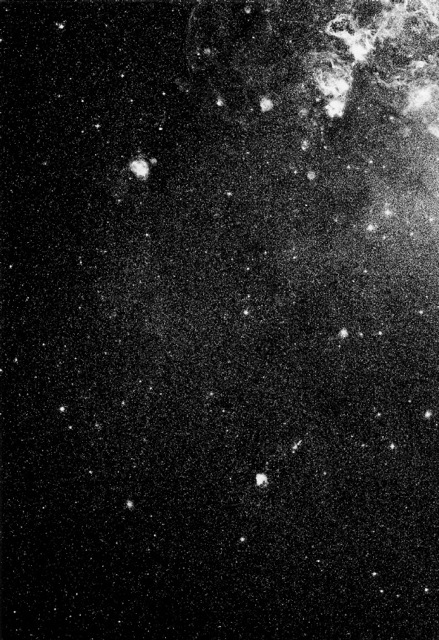
Tired of staying within the enclosed space of a museum when outside the sun is shining and you would rather go for a walk? The satellite tour is the perfect compromise between contemplating artworks and wandering around from spot to spot. Immerse yourself for half an hour at the Float Center, whether in the comfort of a spa capsule or by watching Jon Rafman’s dark video landscapes. Or take fifteen minutes to observe Marguerite Humeau’s elephant-like robots flirting with each other, before acquiring a customized Cartier diamond watch while having a quick look at the frenetic cuckoo clock imagined by Jon Kessler. The choice is yours, but let me try to convince you that these activities are as entertaining as paddling on the lake.
Our first stop is the installation by French artist Marguerite Humeau at the ETH. As I have already mentioned, this satellite consists of two prehistorical mechanical creatures set to an enigmatic choreography. Moving and screaming through a smoky room, they alternately draw near and move away from each other. Watch from behind large windows as this asymmetric ballet of the first love encounter between two living creatures, from attraction to repulsion, plays out for about ten minutes. The message “caution chemical castration drugs” has to be taken seriously, ladies and gentlemen, so you had better not take any unnecessary risks. Thanks to the film screened at the Pavillon of Reflections, which might have gotten them into the mood, or simply because they are ETH students, a few visitors dare to come and experience the whole song and dance without leaving prematurely. However, no more than 15 people per day make it to the isolated room to witness the robots’ performance. Why? Is it too far from the main venues? Or maybe the absence of signs pointing people to its existence could also explain why they are not rushing in. A real pity because you should definitely give up on your errands and jump on the number 6 or 10 tram to remember what mating looks like without dating apps.
The second stop is the Float Center in Röschibachstrasse. Although it is close to Manifesta 11’s main venue at Löwenbräukunst, this satellite might have expected more curious visitors. According to Jon Rafman’s host and Float Center owner, Oscar Trott, the spa opens its doors to approximately 30 people in a week. Among them, people who like walking or people from the nighbourhood. Except for journalists, they come and go without asking any questions. As a matter of fact, most of the visitors are not from Zurich but tourists. Maybe because summer in Zurich sounds like heaven on earth and its citizens cannot decide between rushing down the Limmat river on rubber tyres, raving at a techno festival or taking part in a rollers race. Or maybe it’s because of the limited opening hours of the spa. While he might have expected more visitors, Trott also regrets the lack of exchange between the visitors and the spa staff. However, it is not too late to go there for a Rafman & spa session. Right? Don’t make me beg.
Our third stop is Hotel Rothaus in Langstrasse, a street where football fans, hipsters on fixies and transvestites on 5-inch platform shoes live in perfect harmony. Teresa Margolles’ project consists of a filmed performance in which three Mexican transvestite and transgender sex workers play poker with Sonia, a Swiss transgender sex worker and the artist’s main host. The performance stands as a kind of pretext for a discussion about the different working conditions of sex workers in Switzerland and Mexico. Tragically, one of the Mexican hosts was murdered in dramatic circumstances. Now part of Margolles’ proposal, a giant portrait of the deceased adorns room 104 of Hotel Rothaus. Depending on the weather and what day it is, I am told at the reception that the visitors of this third satellite can be counted on the fingers of two hands. Yet while sipping a coffee after their short tour, the visitors exchange quite a lot with the staff by asking questions about Margolles’ piece and also about the history of the hotel. Thanks to this common interest, the experience is enriching on both sides. And that’s not just me saying it …
Fourth and last stop is Klärwerk Werdhölzli, the wastewater treatment plant where Mike Bouchet learnt how to turn 80 tonnes of human excrements into 350-kilo cubes. Philipp Sigg, an engineer at Werdhölzli and Bouchet’s host, proposes guided tours in which he introduces the visitors to the water cleaning process. Either because they live near Löwenbräukunst, because they have been encouraged to do so or because they have been particularly seduced by Bouchet’s Zurich Load sculpture at Migros Museum, there are always a couple of visitors who sign up for a 90-minute tour at this satellite. Led by Captain Sigg, the visitors see a selection of unclassic installations during their very special trip through the wastewater plant and meet the staff who worked on Bouchet’s joint venture – in other words, the backstage of Zurich Load. Mainly impressed by the huge amount of material that is treated and processed every day, the visitors ask lots of questions and leave with very positive feedback. Just so you know, you should take your chance now as the two last tours are planned for 23 August and 9 September.
ETH Zürich,Sonneggstrasse 3, 8006 Zurich
Meeting point: Sonneggstrasse 3, Zurich
Time: Mon–Fri 15.00–17.00
For security reasons DO NOT enter the building on your own. Please wait for your guide. Entry every 30 minutes. Participants: max. 20. Not wheelchair accessible
float Center Zurich, Röschibachstrasse 71, 8037 Zurich
Opening hours: Mon 13.00–17.00, Thu/Sat 10.00–12.00, Sun 11.00–17.00
Klärwerk Werdhölzli, Bändlistrasse 108, 8064 Zurich
Tour dates: 17 June, 1 July, 15 July, 29 July, 12 August, 26 August & 9 September 2016 at 13.00
Hotel Rothaus, Sihlhallenstrasse 1, 8004 Zurich
Opening hours: Mon–Sun 12.00–20.00
Aurélie Pittori, Manifesta 11 Art Mediator






